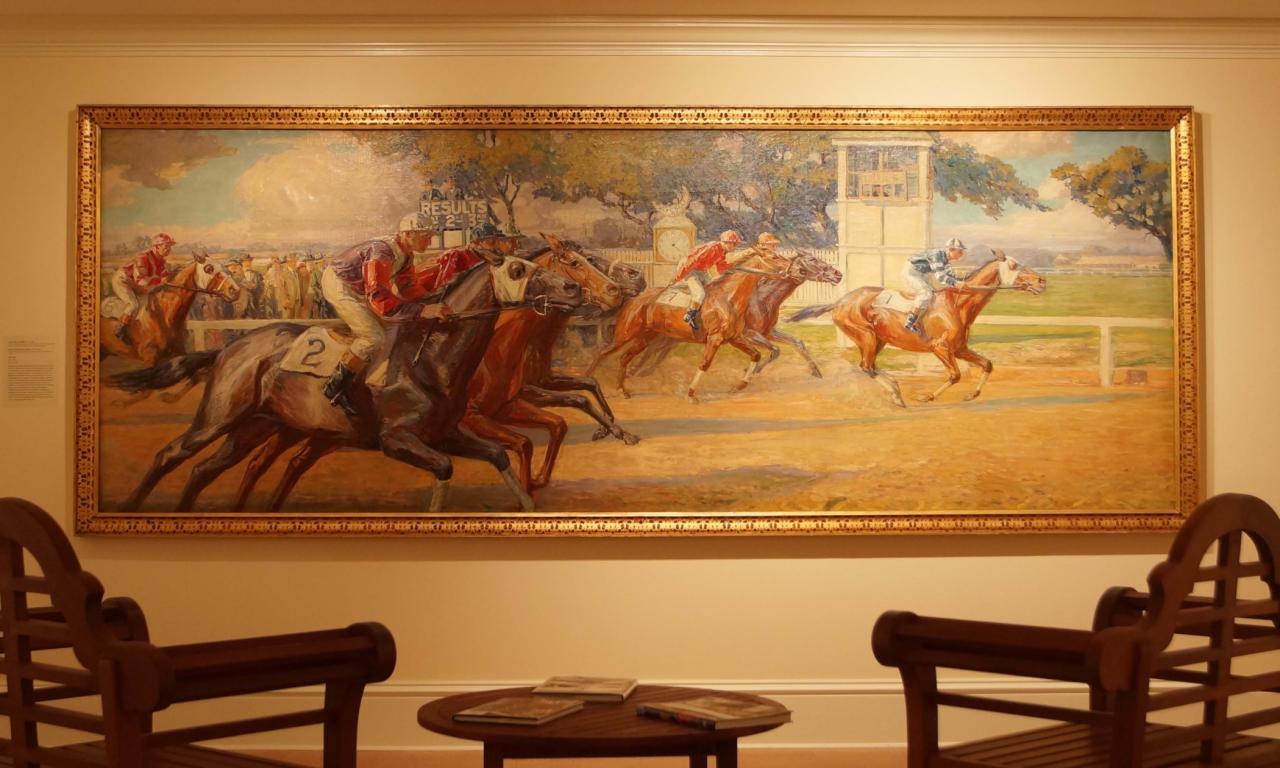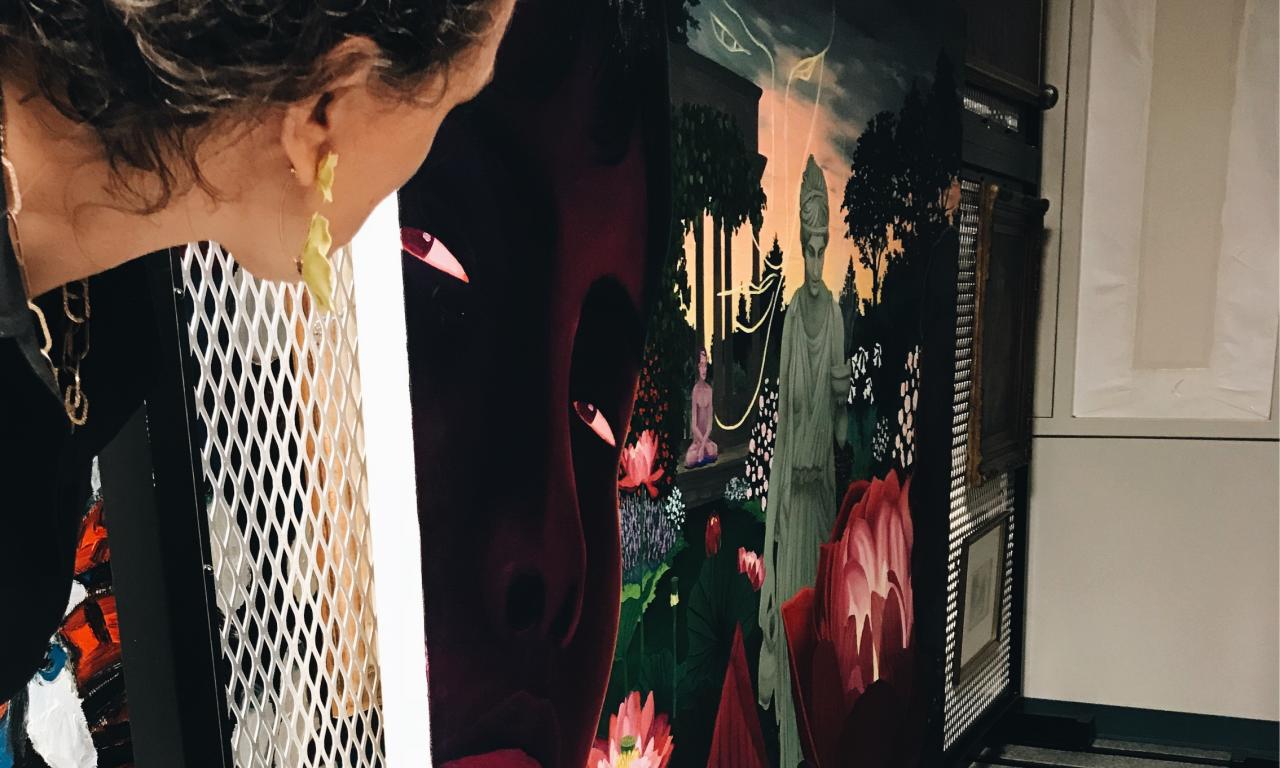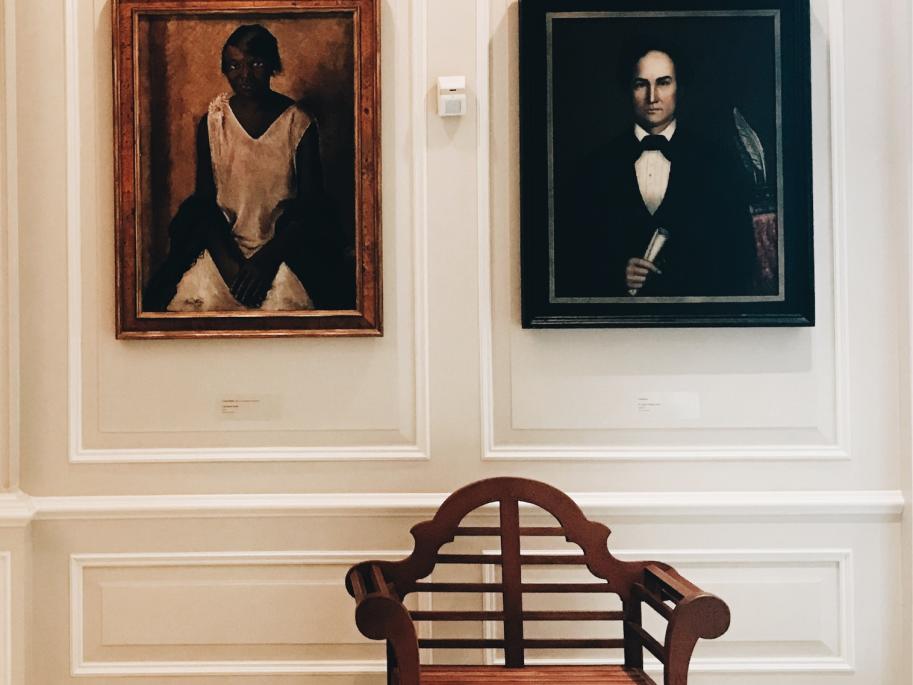by Sarah Southern
Like an iceberg, only a small percentage of The Morris Museum of Art’s collection is available for public viewing. The Morris’ permanent collection includes approximately 5,000 works of art, paintings, sculptures, photographs, drawings, and prints. Currently, only five percent of the collection is on display while the remaining 95 percent is stored downstairs in four separate storerooms or loaned out to other museums or exhibitions. Despite the small space, art is swapped out often at The Morris who hosts 15-20 exhibitions throughout the year.
“There’s always something new to see at the museum,” explains museum curator and director Kevin Grogan. “If you were to come in four times a year, you’d see something different each visit. That’s the point of our scheduling - to keep everyone fresh and interested.”
Portraits of long-gone southern gentlemen, ladies, and children, oil paintings depicting the violence of the Civil War, unassuming canvasses subtly revealing dark secrets of ancient transactions, beeswax abstract art, colorful sculptures, Stephen Estrada’s ominous coastal landscapes, and the refracting light transcending through Robert Vickrey’s ethereal egg-tempera paintings are just a few of the pieces and collections currently on display at The Morris.

Though it doesn’t take long to journey through the halls and rooms, visitors should plan to take their time and walk through slowly, closely examining the brush strokes of American impressionists, reading the hundreds of pig signs in John Baeder’s “Col. Poole’s Pig Hall of Fame” (a 1995 oil painting of Poole’s Bar-B-Q restaurant located in East Ellijay, GA), and observing the 25 expressive faces of the choir members in Dale Kennington’s “Gospel Sing.”
The museum has 11 permanent collection galleries, starting with what Grogan calls the “scene-setting” gallery of southern Nineteenth Century Portraits and ending with much later Contemporary Art in the South.

The portrait section “helps us define who is a southern artist - people who are residents, born [in the south], artists who trained or worked here. And people who came from somewhere else and found a home in the south,” says Grogan. “Portraits give us a broad overview of where our south lies.”
Grogan is an arsenal of stories and little known facts of each and every painting. He can recall an artist just by looking at a piece and tells anecdote after anecdote about an artist’s origins or the unique discovery of forgotten works like Robert Grafton and Louis Griffith’s pair of giant paintings of a 1917 New Orleans horse race for the Saint Charles Hotel. When the hotel was torn down in 1974, everything inside was packed up in warehouses and forgotten.
“After Hurricane Katrina, the one of the pieces, "The Start," was found in a warehouse that had been flooded up through three stories and the sister painting, "The Finish," has never been found, so our assumption is that it’s floating somewhere in the Gulf of Mexico or something,” says Grogan.
Miraculously, "The Start" was in excellent condition and still had the original frame from its display at the Saint Charles. The Morris bought the painting at auction in 2005.

A direct left turn from the horse race and Southerners at Play collection and visitors find themselves transported through a few decades to the colorful and psychedelic displays of post-1970’s abstract art. Betsy Eby’s encaustic “Painting With Fire” immediately catches the eye due to its large size and compelling artistry created with beeswax and a blowtorch.
“I wouldn’t work with a blowtorch for a living if my life depended on it,” jokes Grogan in admiration of Eby’s courageous technique.
It is difficult for Grogan to name a favorite artist and style. With 5,000 pieces to choose from there is literally an abundance of southern art available both on display and deep in the recesses of The Morris’ unpublic storage facilities. Nicole McLeod, marketing and public relations manager for The Morris, encounters the same difficulty naming a single favorite artist, artwork, or even style. She says her favorite styles and pieces depend on “whatever speaks to me. I like a lot of contemporary. I like sculpture. I love photography and folk art. But I love impressionism too.”

Downstairs, the storerooms provide temporary lodging for art waiting to be brought to the surface and exhibited. Metal floor-to-ceiling panels move along rails, each panel displays piece upon piece of the Morris collection. A quick trip to the storeroom reveals well-organized and even forgotten pieces. There are still many items in storage yet to be displayed.
“This is so fun - I love doing this,” says McLeod as she pulls back a panel and excitedly exclaims, “Oh I love this! I like that too - I forgot about that!” In the storeroom are three-dimensional paintings, drawings, impressionist depictions of Charleston architecture, more portraits, and vibrant works by artists Don Cooper and Jonathan Green (two of McLeod’s favorites).

With hundreds of pieces of art available to The Morris, Grogan and the staff make a point to rotate through styles and media when creating exhibits. Grogan explains there are at least 700 pieces of folk art and 700 photographs, as well as a rather large collection of impressionist paintings that remain in storage, unseen by the public due to a lack of space. Fortunately, there are plans in the works to move The Morris to a larger downtown venue in the next few years.
Though a small museum, The Morris packs a punch with its well-curated collections, uniquely southern artists, evocative folk art, colorful contemporary works, realistic still-life paintings of flora and fruit, and awe-inducing landscapes. Every few weeks, new pieces emerge in the gallery, taking the place of other works bound for the metal panels in the chilly storage rooms, all a part of the exciting and ever-rotating collection of the continental United States’ finest examples of southern art.
As Grogan says, come often -- there’s always something new to see at The Morris.

Explore
Fall 2018 Exhibits
Street Scenes: The Magical World of Robert Vickrey - on display through August 12, 2018
February Sun: Paintings by Charles Edward Williams - on display through October 7, 2018
America Creative: Portraits by Everett Raymond Kinstler - on display August 11 - November 4, 2018
Views of Georgia and South Carolina by Horace Talmage Day - on display August 25 - November 25, 2018











